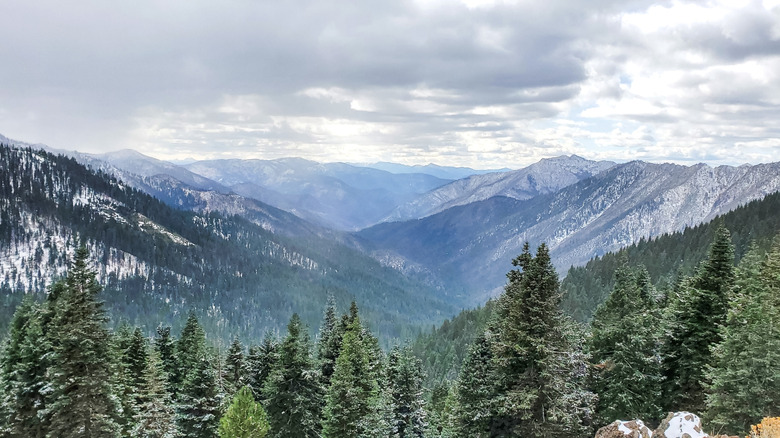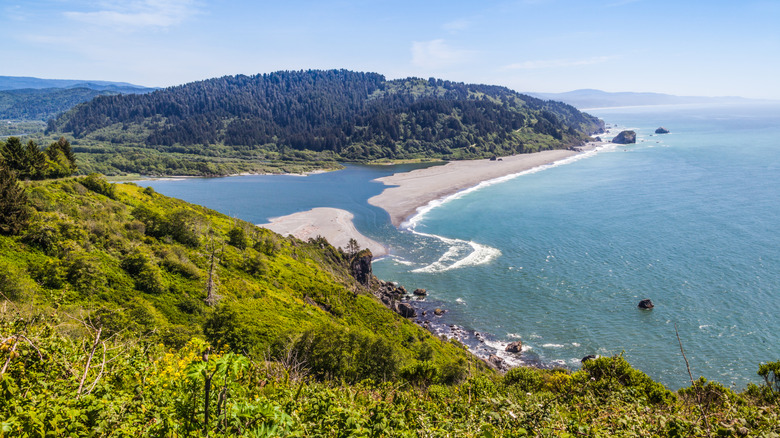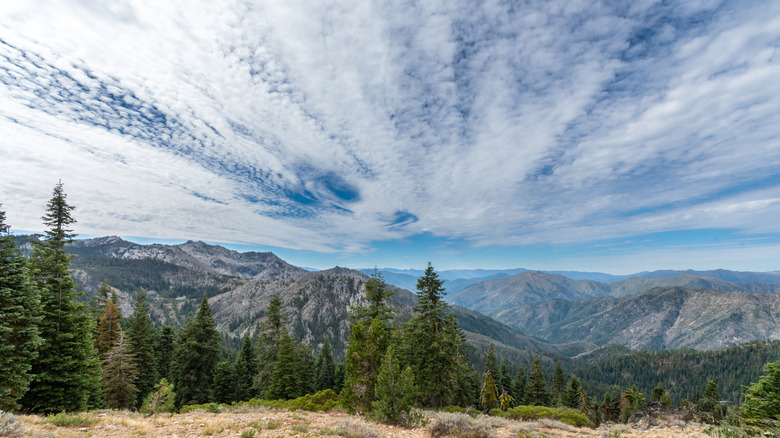California's National Forest On Oregon's Border Is A Vast Outdoor Gem With Renowned Campgrounds And Rafting
Sprawling across 1.7 million acres throughout Northern California and into southern Oregon, the Klamath National Forest & Butte Valley National Grassland provide perfect environments for campers, rafters, and wildlife enthusiasts. Its also nearby other outdoor adventures, such as Mt. Shasta and Trinity National Forest. Numerous trails lead the way into the wilderness, ranging from a moderate level of hiking to easy foot travel for guests and their horses.
Take the Pacific Crest Trail to hike the entire 32-mile wilderness area from north to south, or veer down one of the many intersecting trails. Mount Ashland, via the Pacific Crest Trail, is a moderate, 9-mile hike, at an elevation reaching 1,725 feet. The paths are easily accessible and are suitable for all skill levels, provided they are in good shape.
Unlike the strong rapids at the mountain town of Oakridge, Oregon, rafting the Klamath River is an easy starting point for new whitewater rafters. Listed as providing many Class III-IV+ rapids and a long season for boating, this river is recognized as a prime whitewater rafting destination. With soft rapids and inviting swimming holes, even adventurous parents with young kids can use this location as an introduction to rafting. To reach the Klamath National Forest in Northern California, Highway 97 is one route, while driving the I-5 is also an option. The Rogue Valley International-Medford (MFR) Airport, in Medford, Oregon, is an hour-long drive to the national forest.
Camping within Klamath National Forest
There are 34 campgrounds and 10 picnic areas within the Klamath National Forest. Some campground locations are horse-friendly, while others are wheelchair accessible. The campground at Matthews Creek offers numerous swimming holes within the nearby Salmon River. Camping at a higher elevation is possible at the Mt. Ashland campground, with majestic views and access to the Pacific Crest Trail.
Martins Dairy campground is located at a mountain meadow, along with the start of the Little Shasta River. For those with horses, the Martins Dairy Horse Camp is ¼ mile north of the main campground, with four campsites, each with a small adjoining corral. Big Flat Trailhead campground is another of four campgrounds that serve as a horse camp with riding trails. It's also a recommended campground if hiking to the scenic Trinity Alps Wilderness or the Caribou Lakes is on the agenda.
For those looking for dispersed camping, the forest offers many of those campsites as well, at no cost. Parking must be done no more than 30 feet from the road's edge. A California Campfire Permit must be obtained if you plan to use a BBQ grill, have a campfire, or a stove at any location within the forest, except for developed campground locations.
Marble Mountain Wilderness offers plenty of exploration
Located 60 miles southwest of Yreka, the Marble Mountain Wilderness is a sprawling 225,000-acre nature lover's paradise within the confines of the Klamath National Forest. Perhaps the biggest draw to this wilderness area is the Marble Mountain, which displays a marbled peak of vivid shades of red and gray. Numerous wildlife species reside in this national forest, including black bears, deer, California quails, and rattlesnakes, which are among the most commonly sighted. Coyotes, mountain lions, martens, wolverines, and the pileated woodpecker reside within the wilderness but aren't as easy to spot.
There are plenty of opportunities for water excursions throughout the 89 lakes scattered across the Marble Mountain Wilderness. Various landscapes can be found within this portion of the Klamath National Forest, ranging from flowery meadows to large streams of water and craggy peaks. Fishing spots are plentiful as well, with lakes stocked with rainbow trout, brown trout, and Eastern brook trout.
Head to Wooley Creek for a rare stream that provides catches of summer steelheads and king salmon during both the fall and spring. Many of the lakes are situated in rocky locations, with alpine meadows found throughout the highest elevation points. With many peaks exceeding a height of 6,000 feet, the highest, Boulder Peak, reaches 8,299 feet. No matter what you plan to do, you can scratch your outdoor adventure needs here.


